Porsche 959 History & Story
1985-1988, 1992-1993
Premiere of concept car: 1983 September 15, IAA Frankfurt motor show
Premiere of rallye car: 1985 January with 911 engine, 1985 October with 959 engine
Premiere of street car: 1985 September 12, IAA Frankfurt motor show
Starting from January 1982, the World Rally Championship was run with the new FIA Group B rules which created the most powerful cars in the history of rally sport. In order to homologate a Group B car, 200 street legal cars had to be made. The Group B was meant also for circuit racing, so Porsche decided to join, and probably even on both arenas. The homologation car would become Porsche’s supercar.
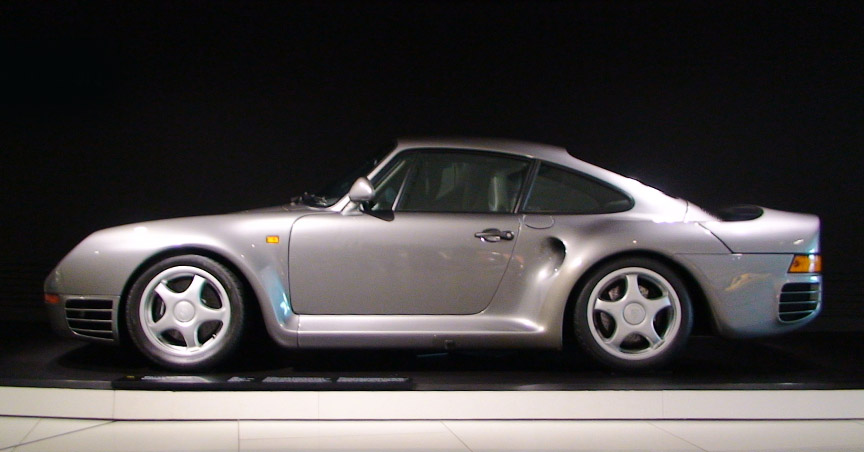
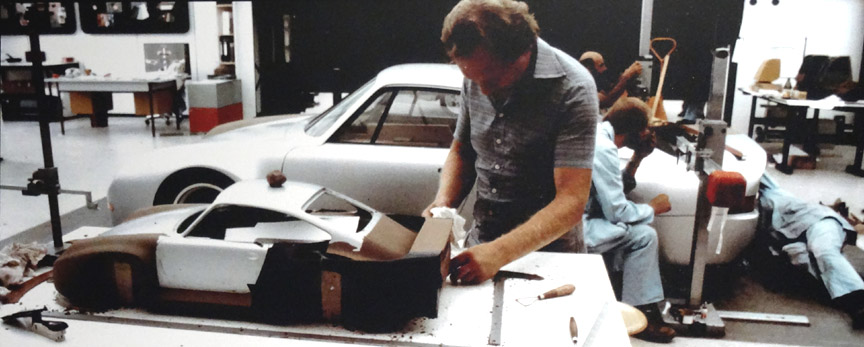
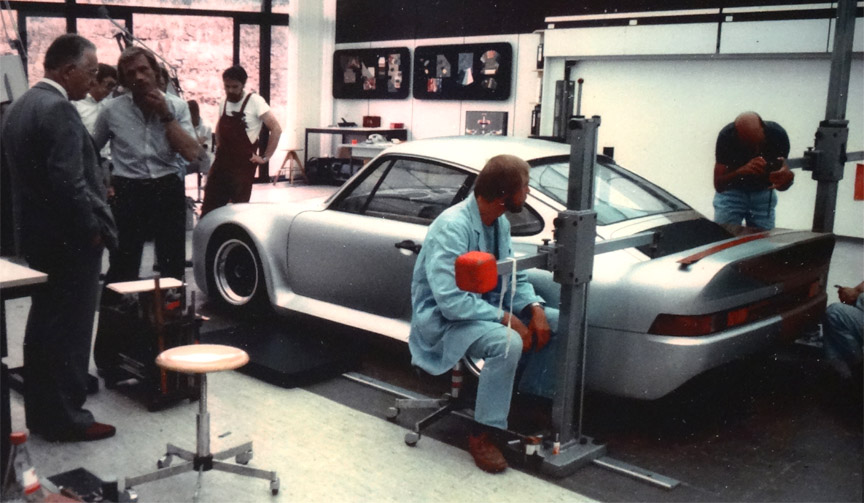
Porsche prepared a very special show car for the 1983 IAA Frankfurt motor show. Called “Gruppe B”, this white metallic dream car was one of the early prototypes of the 959.
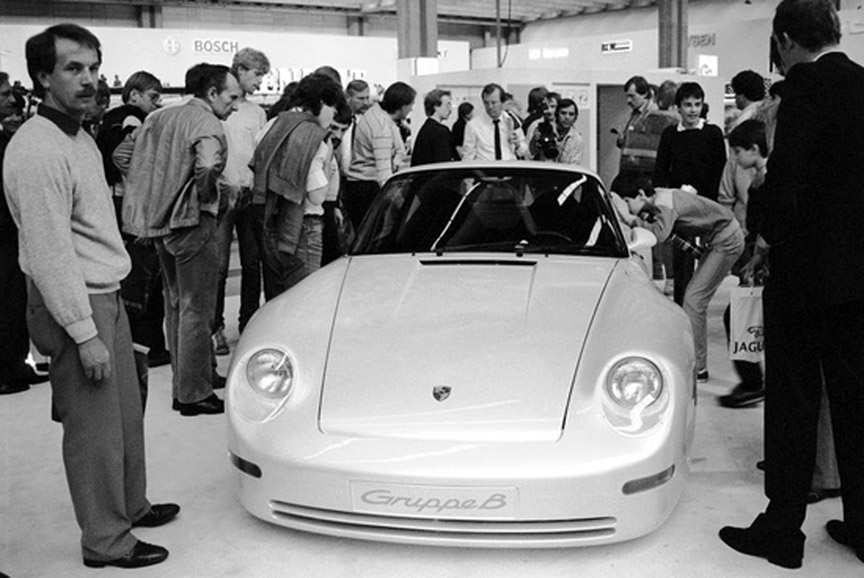
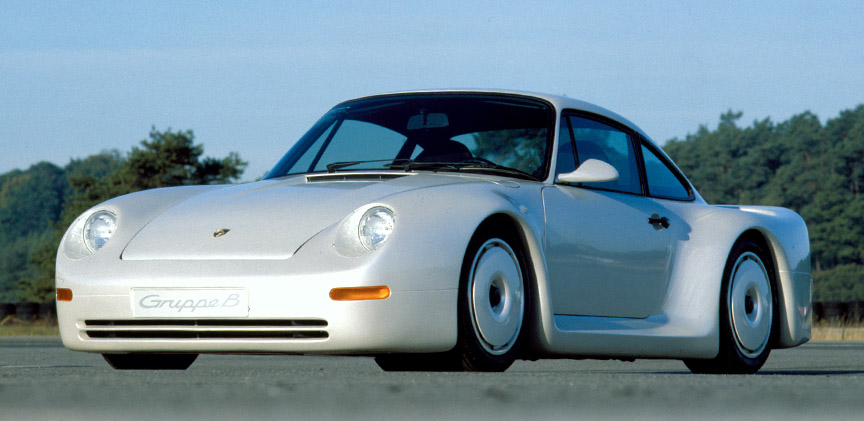
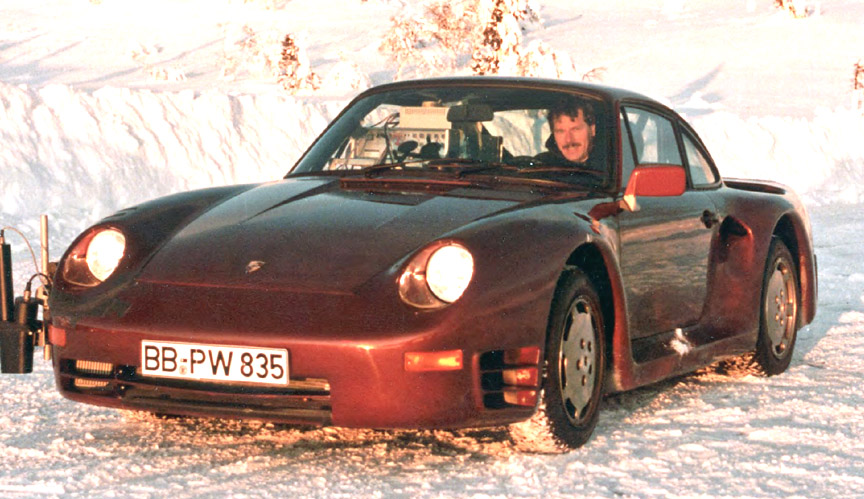
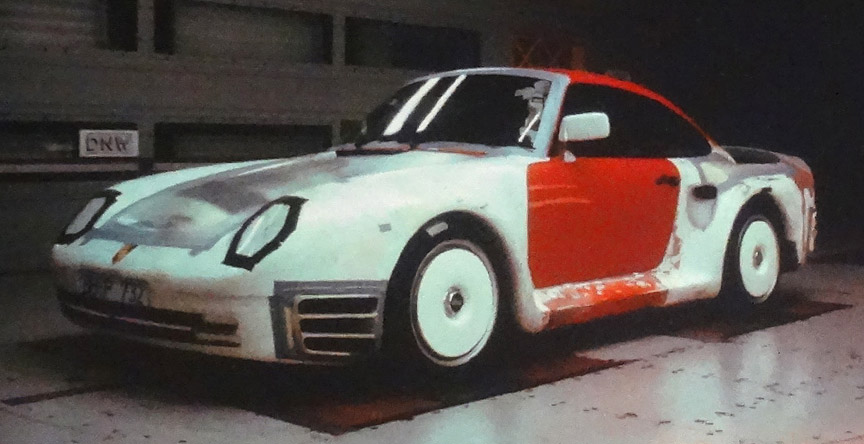
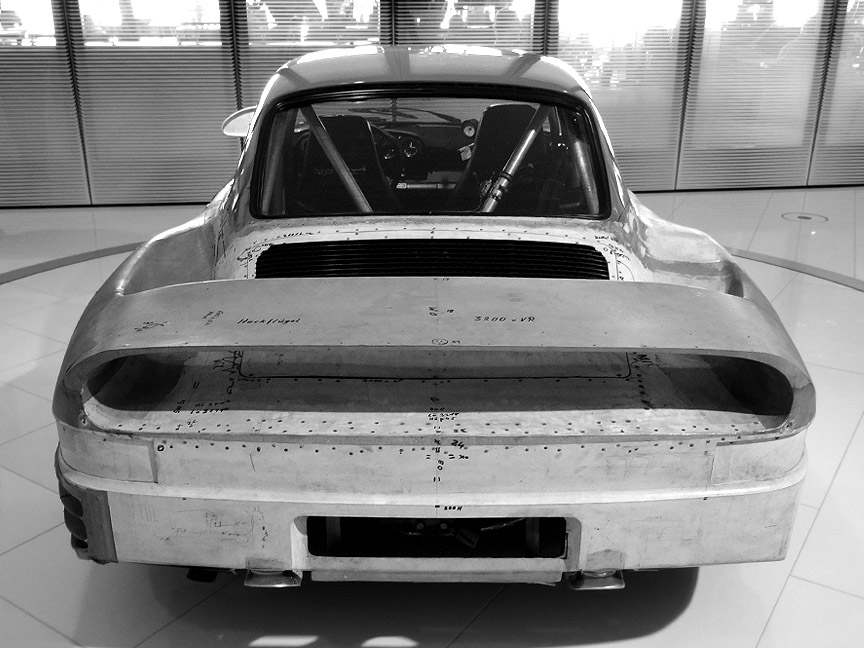
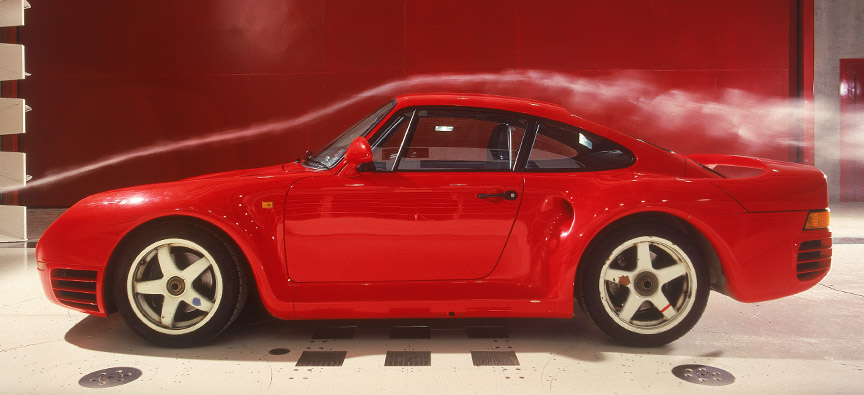
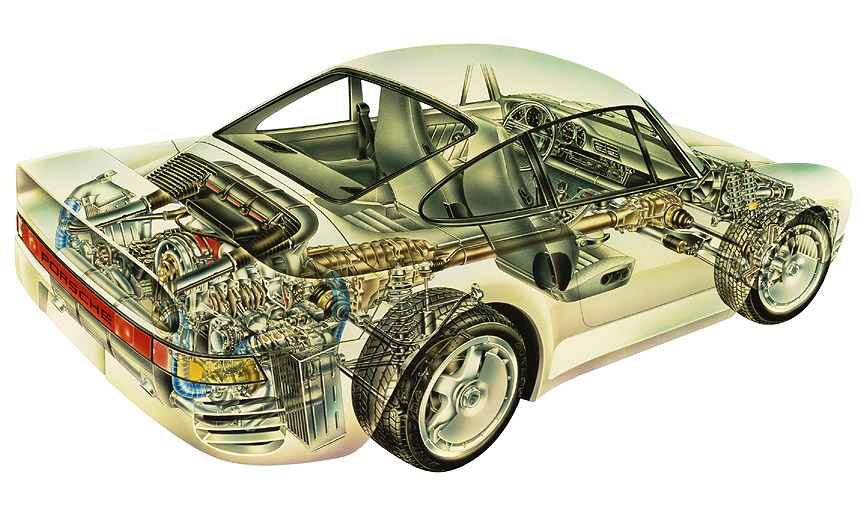
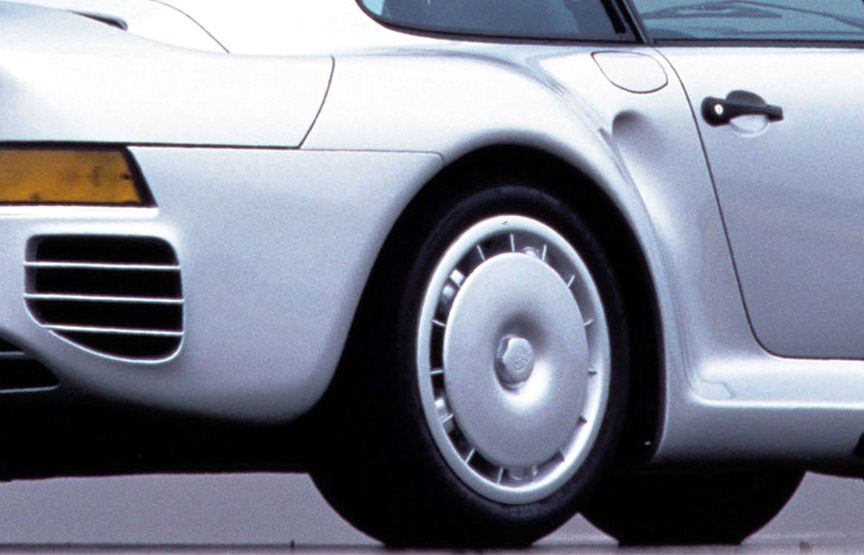
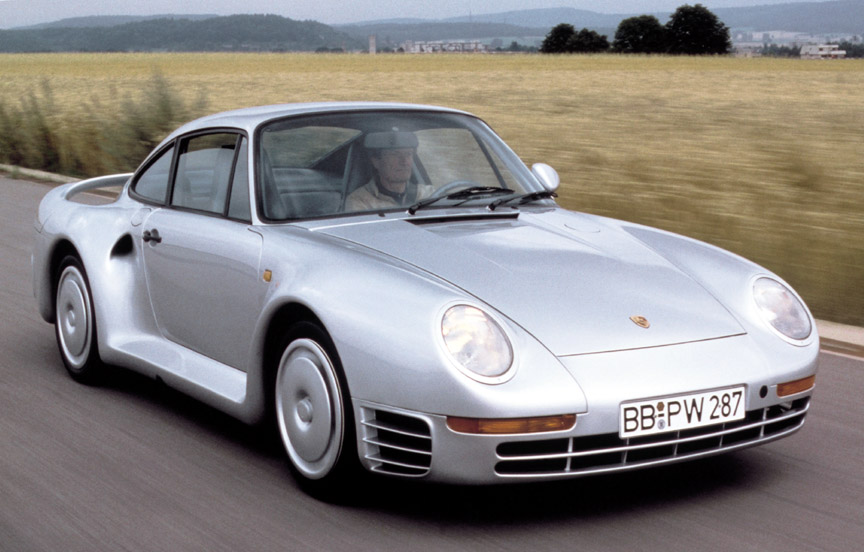
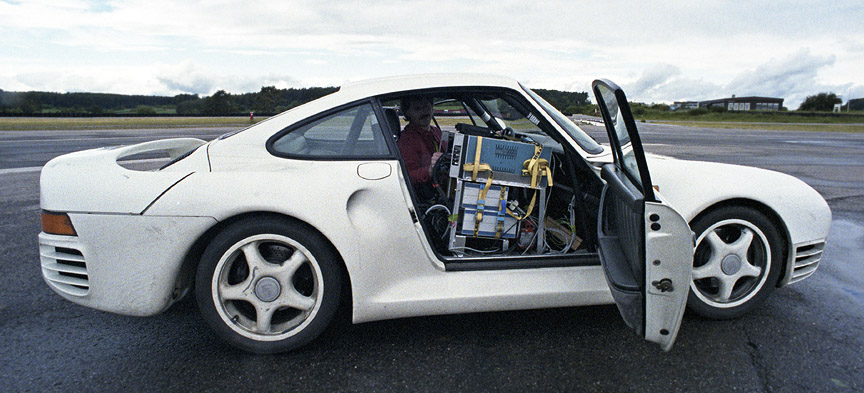
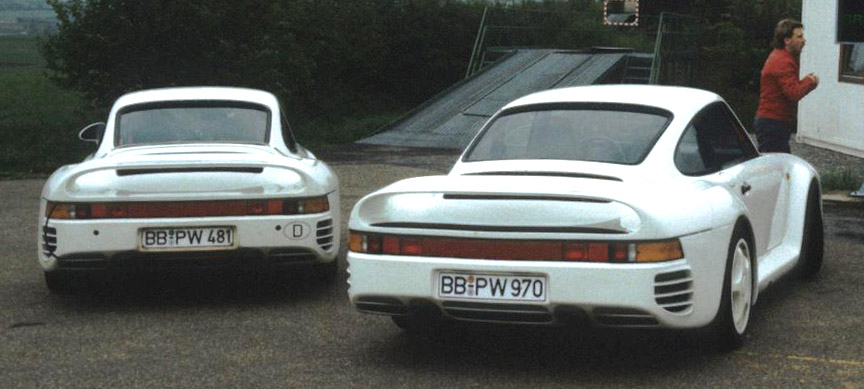
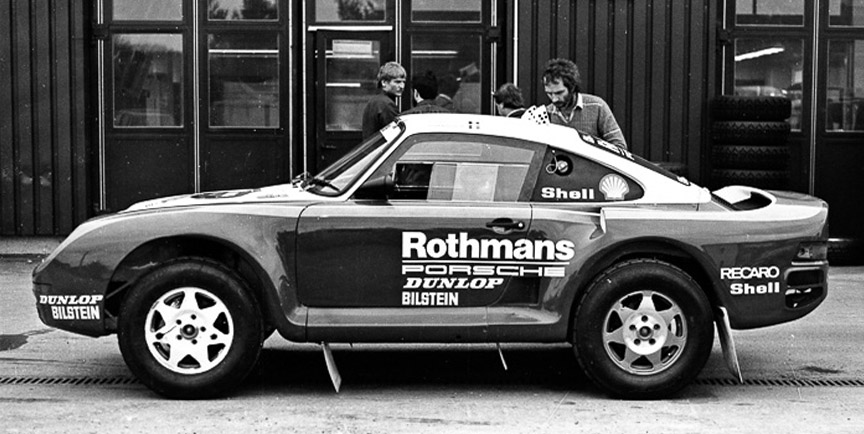
In January 1985, Porsche entered three 959 rally cars with normally aspirated 911 engines in the Paris-Dakar Rally. Unfortunately none of the cars finished.
What a Porsche 959 really is, was put well in an April 1985 issue of Car and Driver magazine:
“Normally, whether you’re talking car business or military, projects like this would be labeled Top Secret right up until they were operational. The only exception might be if you thought the project was so far beyond the enemy that he wouldn’t be capable of a countermove – even if he had a blueprint. The 959 sounds like that sort of quantum leap.”
Porsche introduced the production ready street legal 959 super car in September 1985 at the IAA Frankfurt Motor Show. Technical specifications showed a body made of different materials. The front spoiler was made of PUR RRIM polyurethane, the front lid and the doors were made of aluminium and the rest of the body panels were made of Kevlar aramid and fiberglass reinforced epoxy resin. Under the skin, the car body was made of hot-dip galvanized steel like on the 911. The plastic bodies were made by a company called Baur, located in Stuttgart.
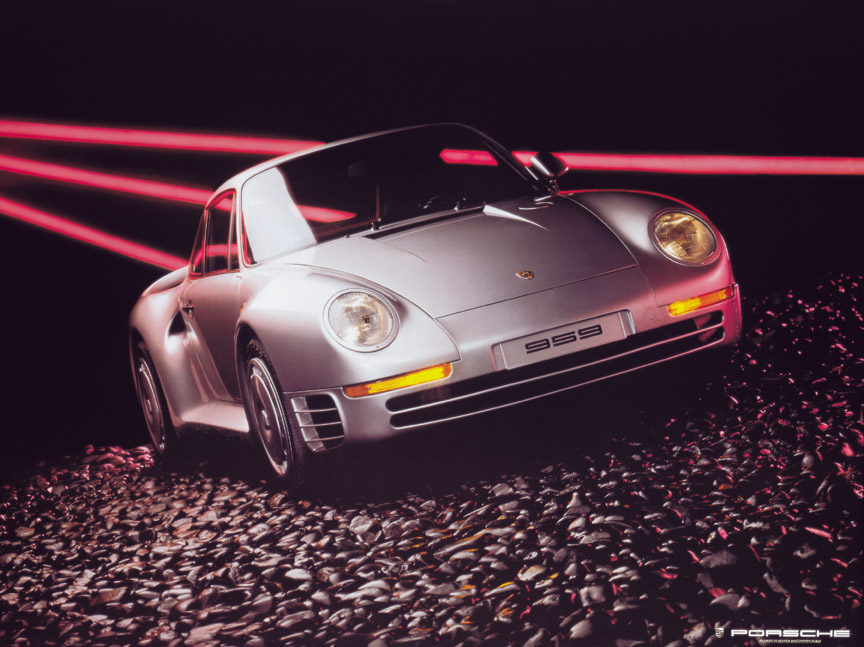
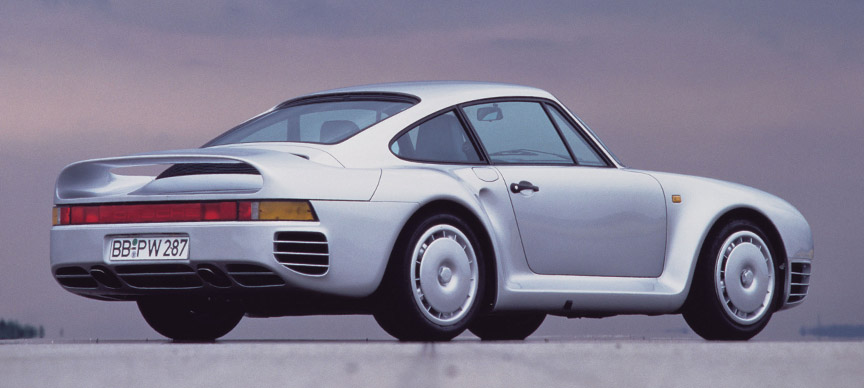
The core engine came from the Le Mans winning Porsche 956 racing car, but the sequential twin-turbo charging system was new and something unheard-of before. While the 956 engine was more powerful, it was designed for pedal-to-metal action, so it didn’t work smoothly at low rpm. The 959 engine was designed as the best engine for everyday street use. As dictated by the microprocessor, the turbine sequence valve and compressor sequence valve regulate the transition from single charger operation to double turbocharger operation.
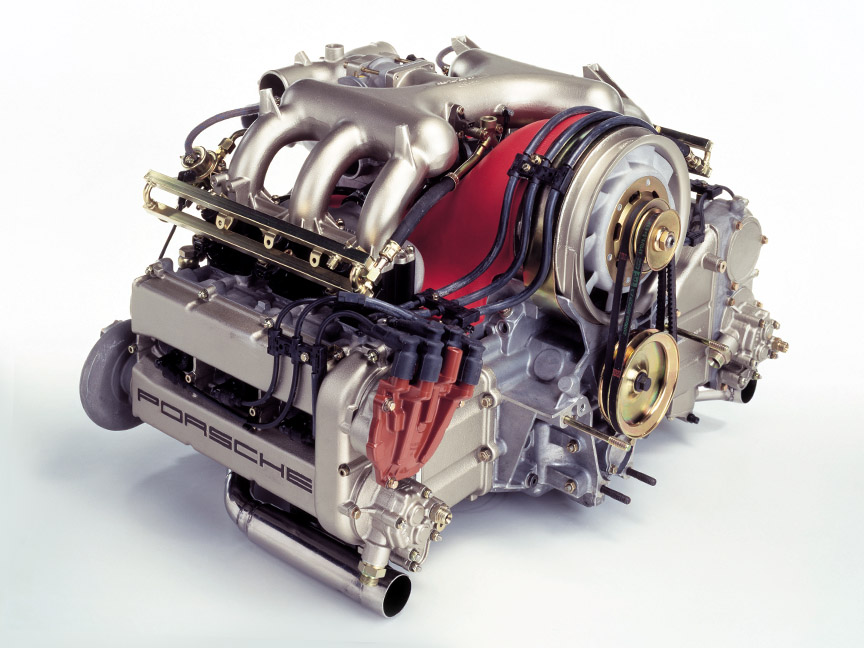
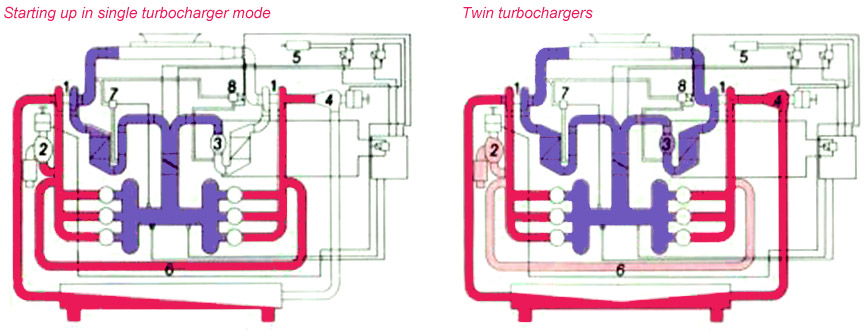
As a pioneer, the 959 was equipped with electronically controlled variable four-wheel drive which could be adapted to road conditions and driver’s wishes. The intelligent 4WD system had four driving modes from “Dry” to “Traction”. In normal driving conditions 60% of the drive force was sent to the rear axle and under acceleration up to 80 percent, taking advantage of the heavier rear end.
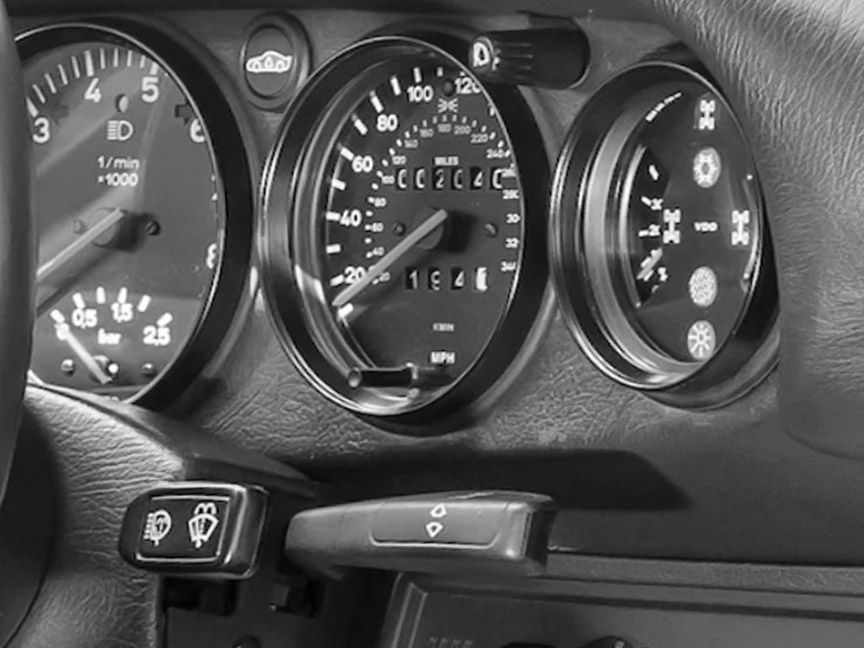
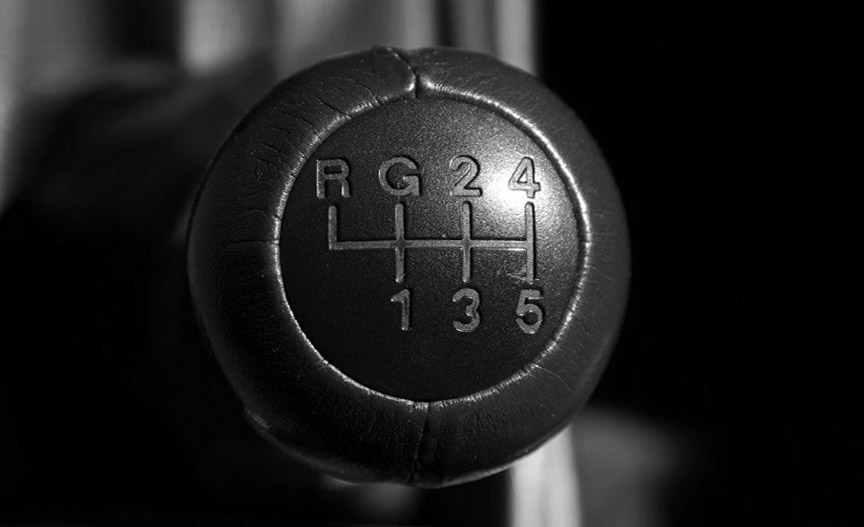
The ground clearance was electro-hydraulically adjustable with the range of 2.4″/60 mm. In the lowest position the car’s ground clearance is 4.7″/120 mm and it can be raised to 5.9″/150 or to 7.1″/180 mm. The car automatically maintains the set level taking into account the payload of the car, which depends on the weight of the passengers, cargo and fuel. While in reality no-one would take this supercar to offroad course, the suspension height adjustment can be used for getting into the underground garage. If an increased ground clearance is selected, the intelligent system automatically lowers the car at high speed.
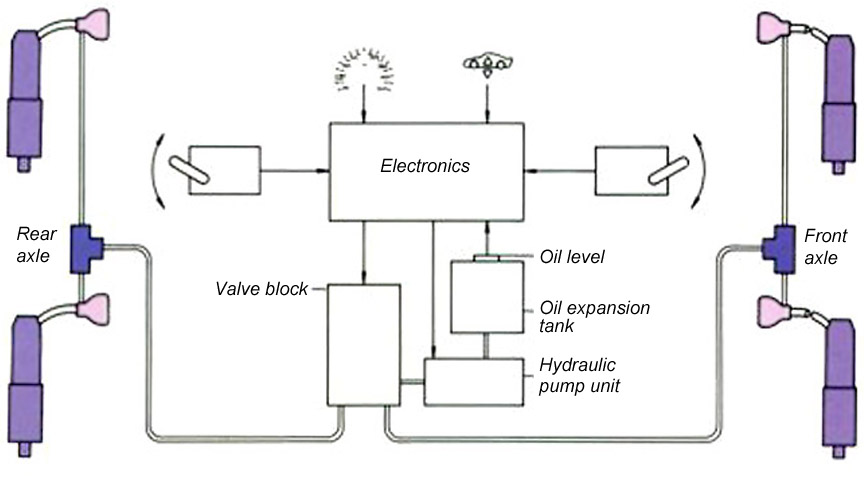
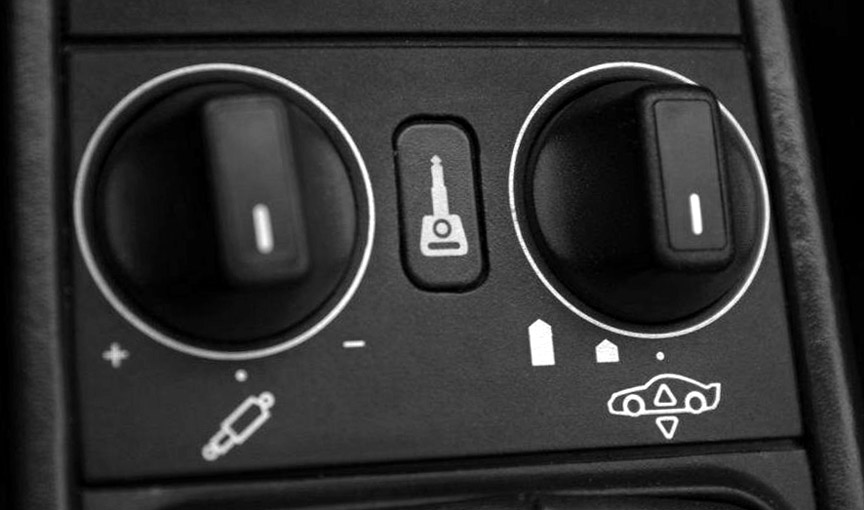
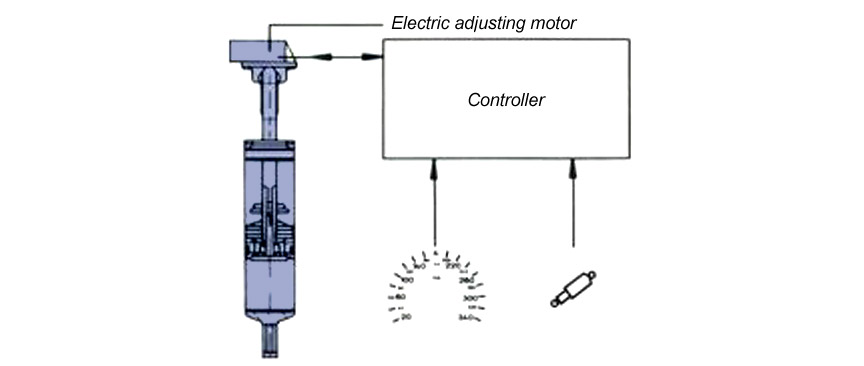
The 959 was the first series production car to have tyre pressure monitoring system.
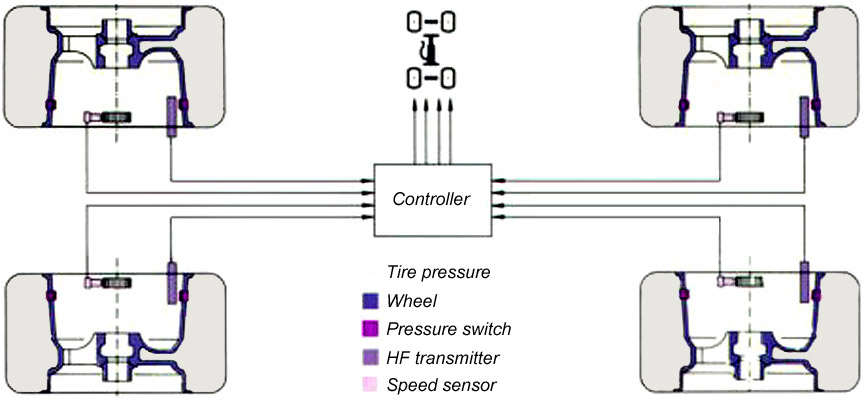
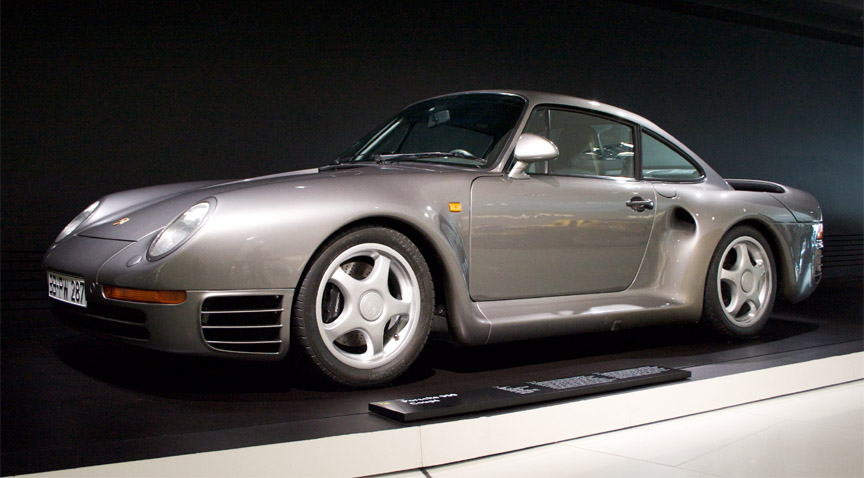
Porsche said in 1985 that the 959 was considered as the sports car of the future and the step into the age of intelligent cars!
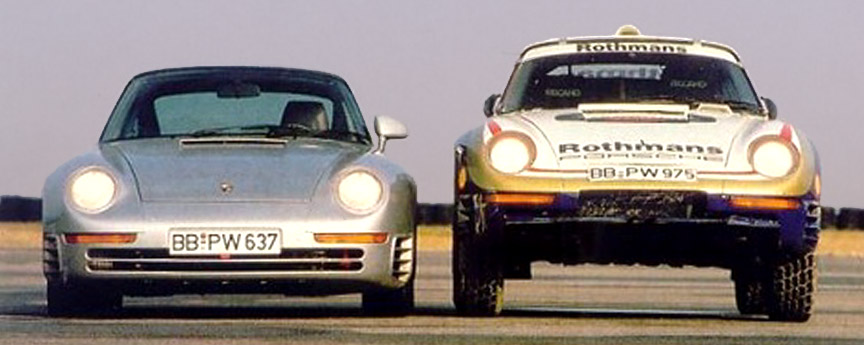
In October 1985, two 959 rallye cars with bi-turbo engines were entered at the 1985 Pharaoh Rally in Egypt. Owing to the lower petrol quality, the engine was detuned to a very mild 390 hp for the demanding desert rallye. The 959 of Jacky Ickx burned to the ground, but the #2 959 driven by Saeed Al Hajri and John Spiller won the rallye. Interestingly, the second place was taken with the Porsche team support car, a Mercedes G-class fitted with the Porsche 928 V8!
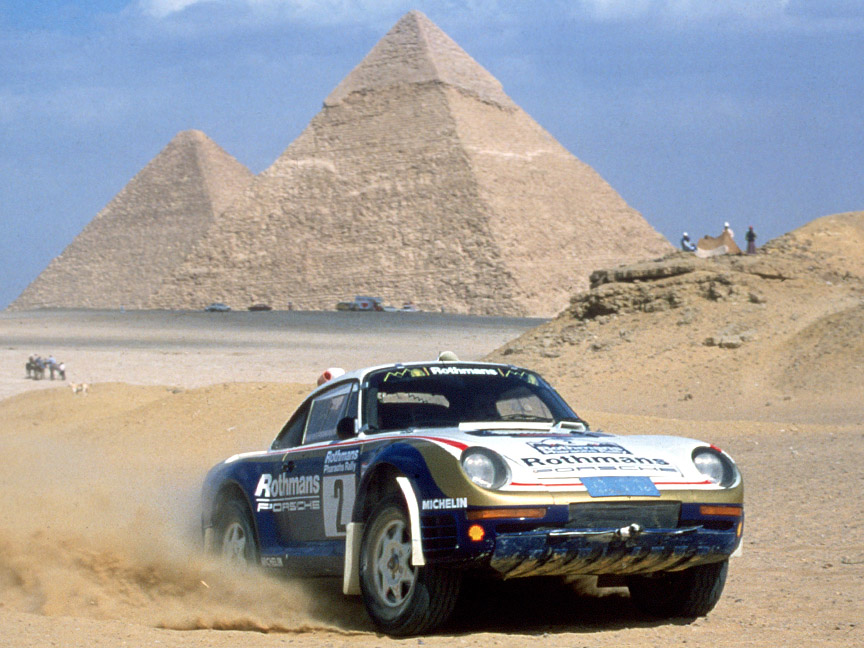
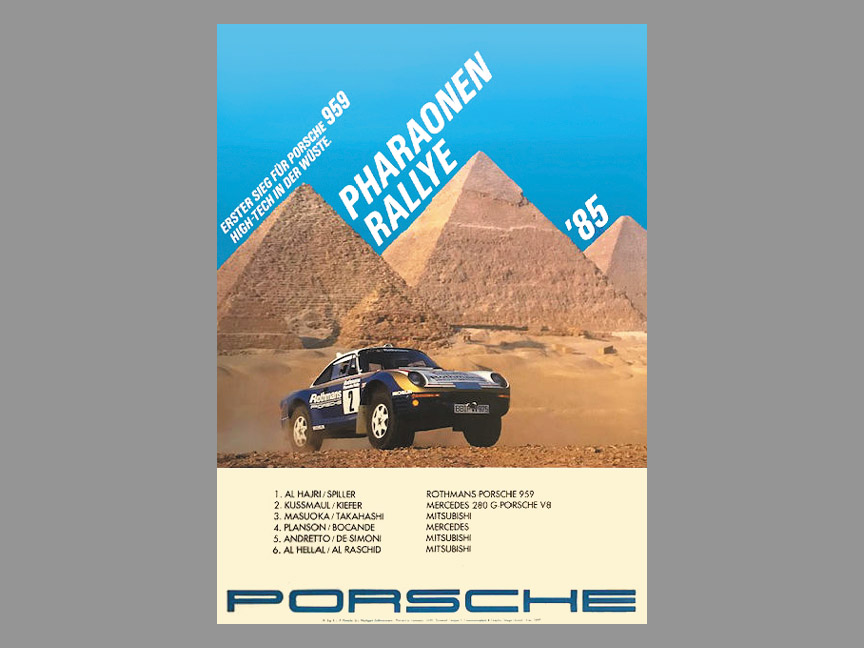
Just two and half months later, in January, the 959 was entered at the 1986 Paris-Dakar rallye again, now with the right engine. The powerful twin-turbo engine needed a lot of fuel, so, in addition to the 22 US gal/85 litre fuel tank at front, the car had a huge 55 US gal/210 litre tank installed where the street car has the rear seats. Compared to the street version, the 959 rally car didn’t have the adjustable dampers and ride-height control. The programming of the drivetrain electronics was enhanced compared to the street cars – in the rally car the torque split could be adjusted from 0:100 to 100:0, which means the car could be configured to use front-wheel-drive only. Under braking, the system had 50:50 torque split.
At the time, the GPS was still a US military technology (and not yet in use even by military), so the navigation was carried out with compasses, maps, rulers and pencils. And by stars in the night.
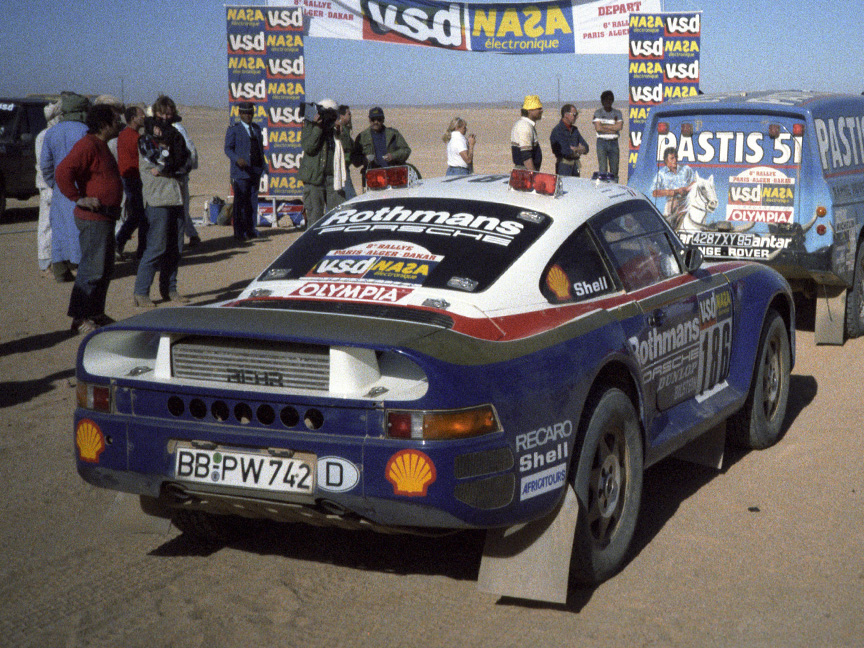
In 1984, René Metge and Dominique Lemoyne had won Paris-Dakar with the 911 Carrera 3.2 4×4 aka Porsche 953 and in 1986 they repeated their victory with the bi-turbo 959. Jacky Ickx and Claude Brasseur finished second. Sixth place was taken by the third 959 driven by Roland Kussmaul and Wolf-Hendrik Unger as a backup car.
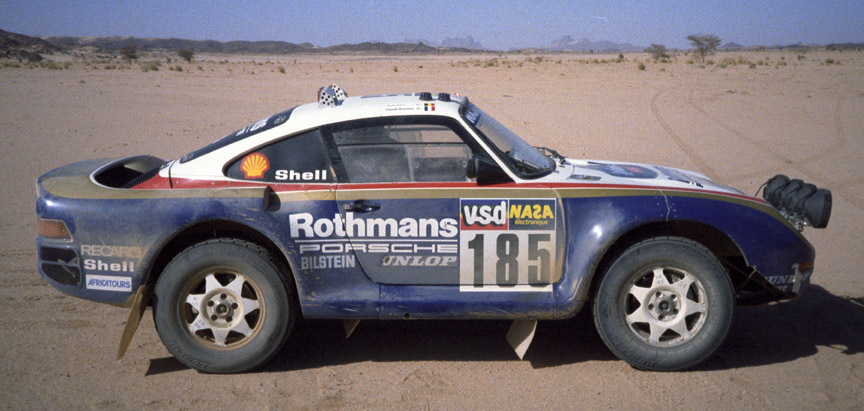
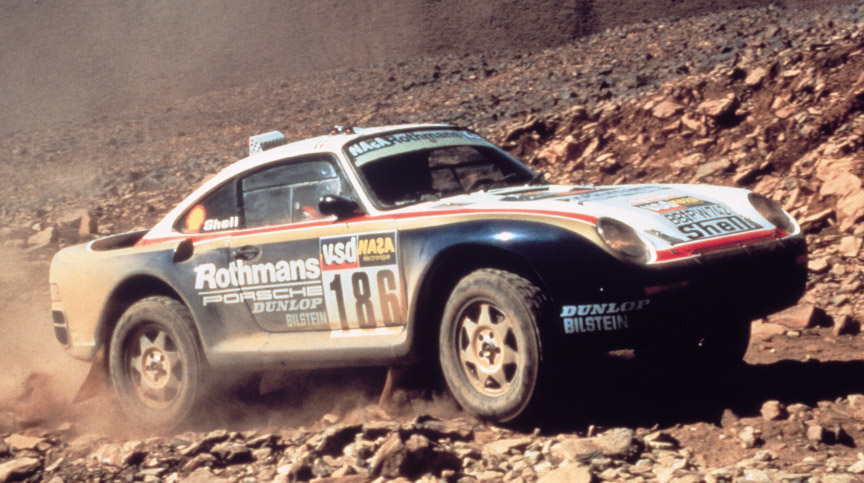
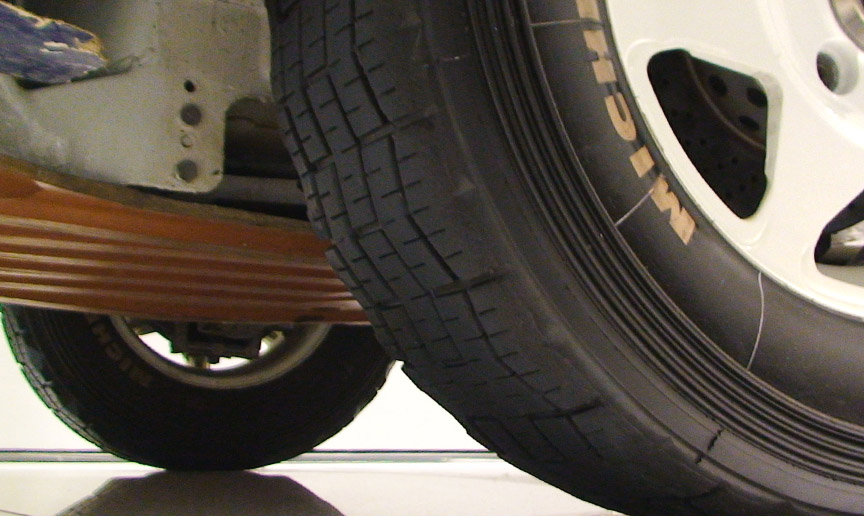
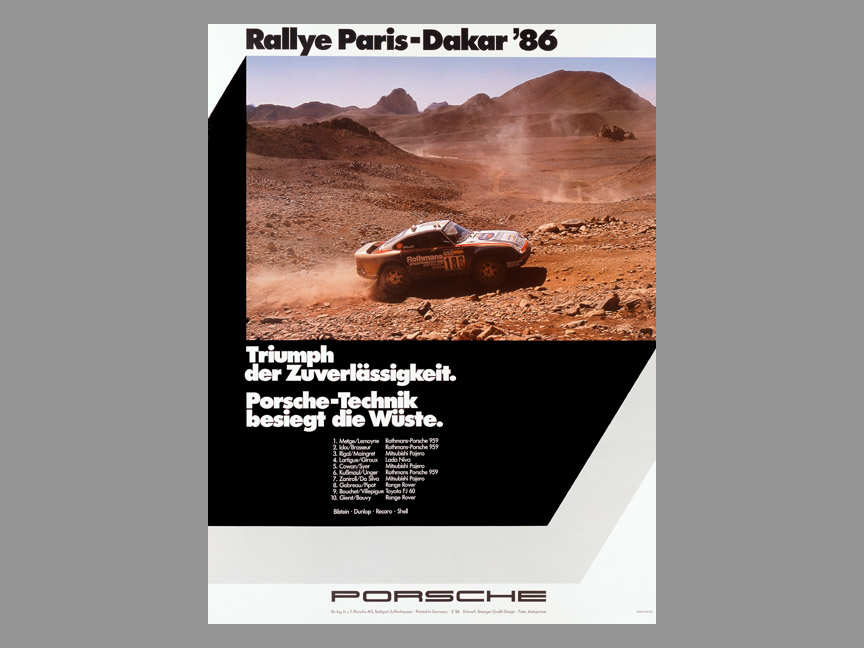
Following the tragic events at the 1985 Corsica rallye, the 1986 Portugal rally in March and the 1986 Corsica rallye in May, FIA announced the discontinuation of the Group B after the 1986 season.
Deliveries of the world’s fastest street-legal production car started in 1987. Because of the small production numbers, the 959 were not assembled on the production line like the 911. The 959 was not available for USA as US authorities would have requested a donation of a few cars for crash testing.

The official performance numbers of the 959 were 0-100 km/h in 3.9 seconds and 200 km/h in 14.3 seconds. Top speed was officially “over 315 km/h”.
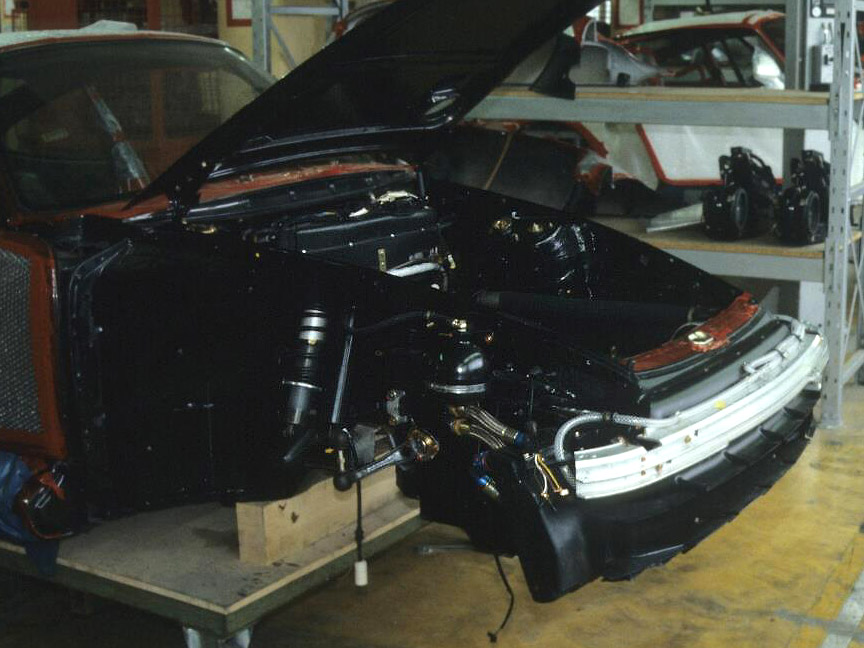
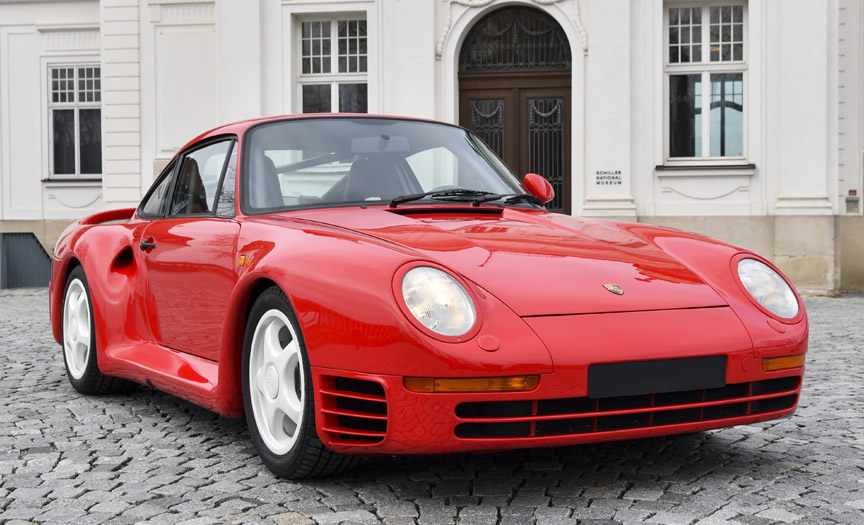
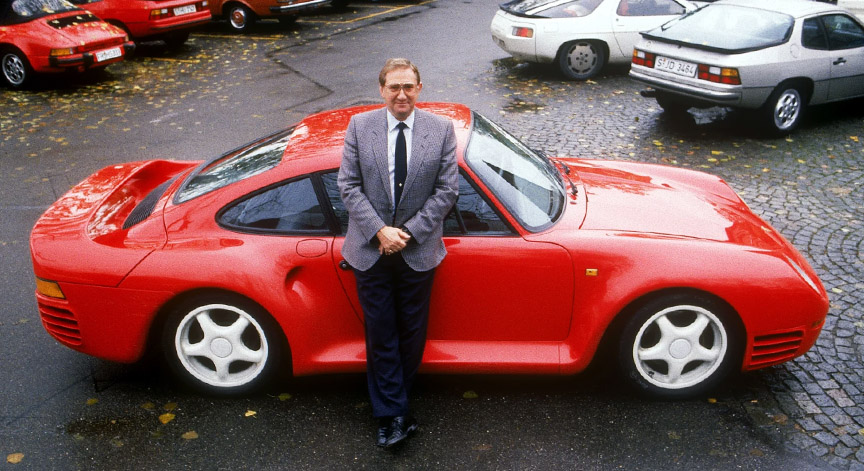
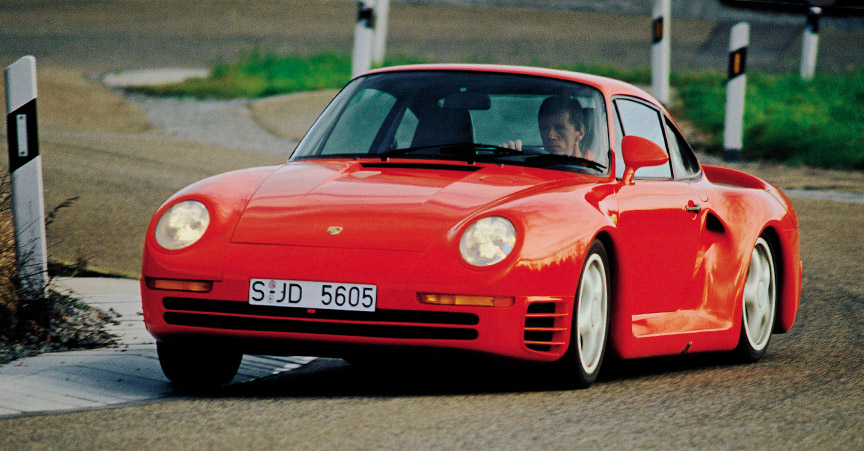
After the 959 production run was over, in 1988, Porsche prepared a 959 for a top speed test organized by German magazine Auto Motor und Sport at Nardo oval test track in Italy. The car was lowered by 2 cm, equipped with longer top gear and bigger turbochargers developing 380 kW and 561 Nm (413 lb-ft). The result measured at Nardo: 3.7 seconds to 100 km/h and 13.3 seconds to 200 km/h. The achieved top speed was an astonishing 339 km/h (210 mph), 20 km/h faster than in Auto Motor und Sport test one and half years earlier. 339 km/h would have been enough for the title of the fastest street sports car in the world if a Ruf 911 would not have done 342 km/h during the same test at Nardo.
In 1992 six to eight more 959 were constructed from spare parts based on an order from an Asian customer.
It is known that one of the crashed 959 was privately converted to a Speedster using 911 Speedster parts.
Exclusive 959 Cars
There was a distinctive batch of 959 cars that were ordered by a customer from Qatar. These cars were highly customized by Porsche. Some examples:
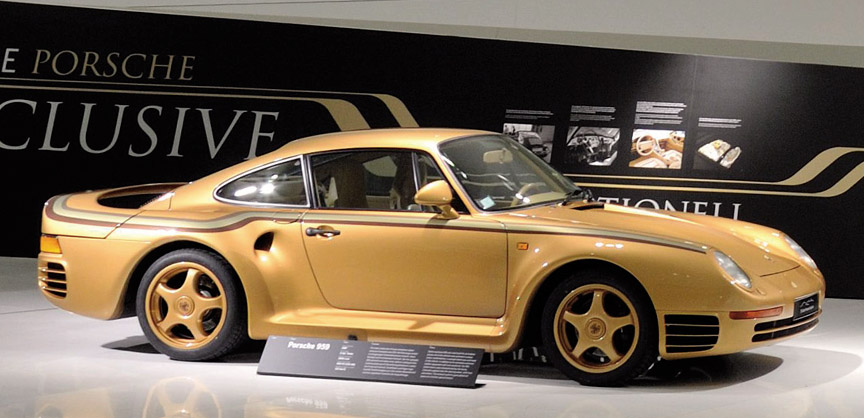
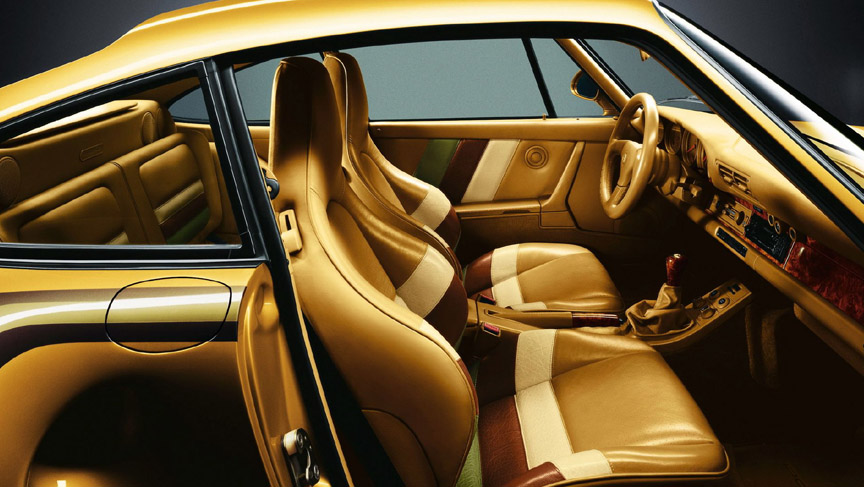
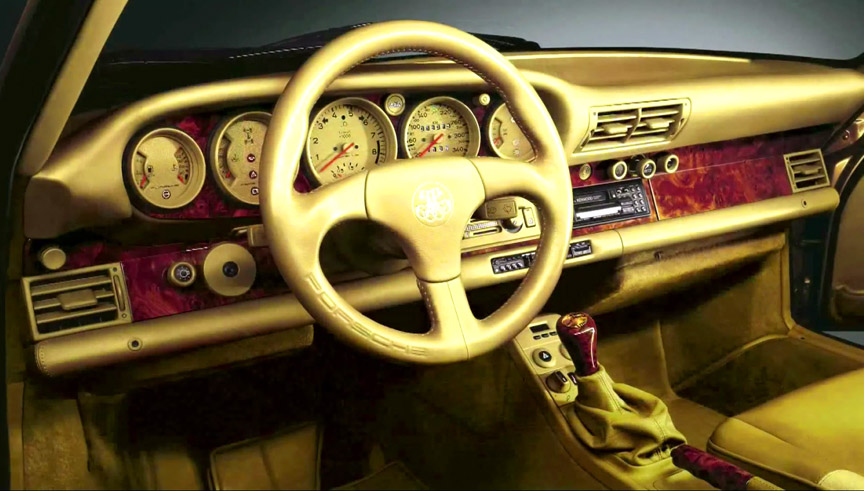
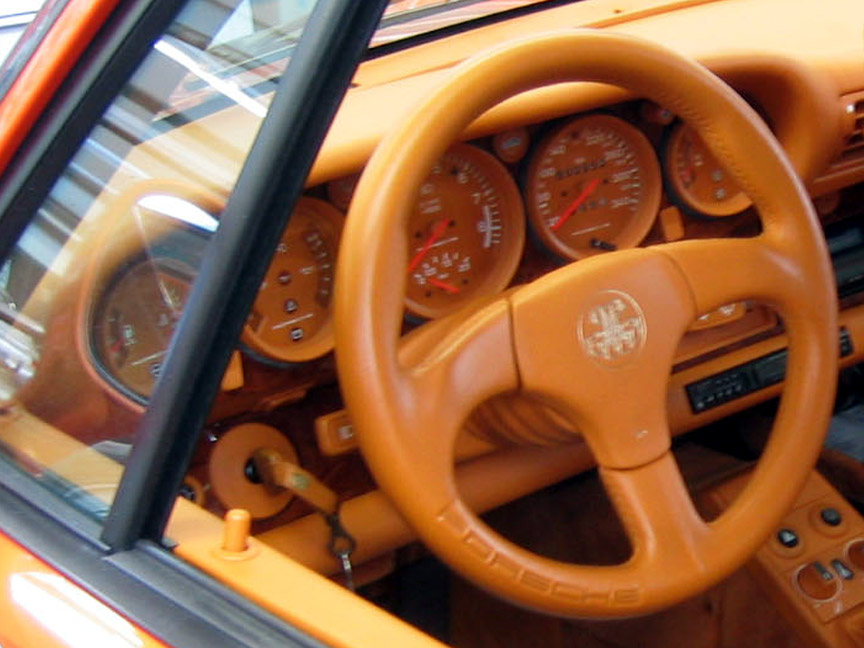
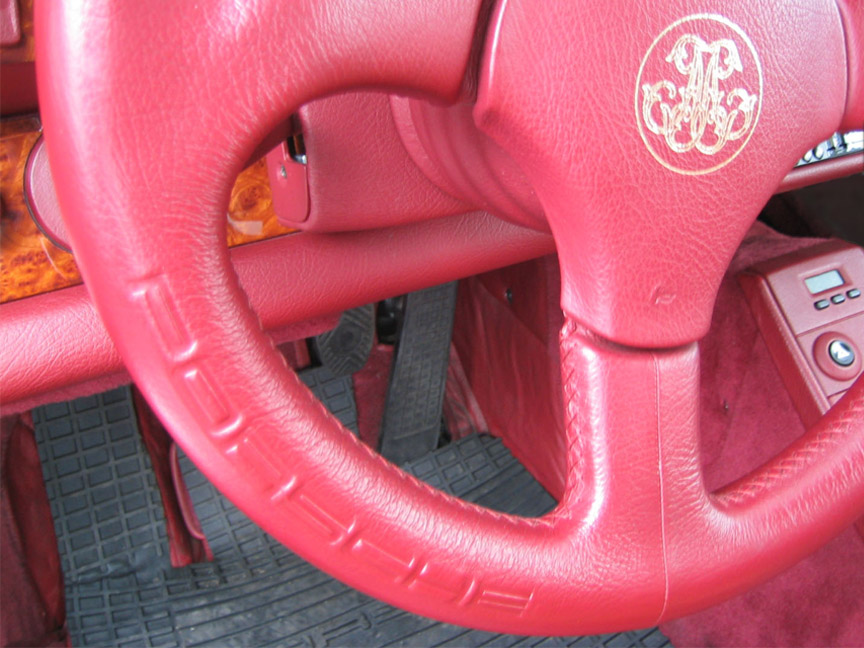
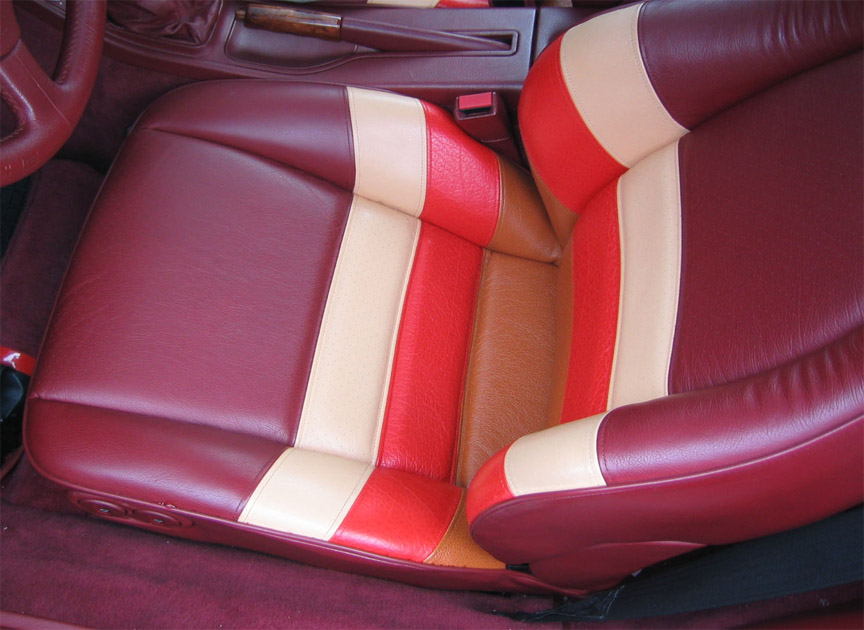
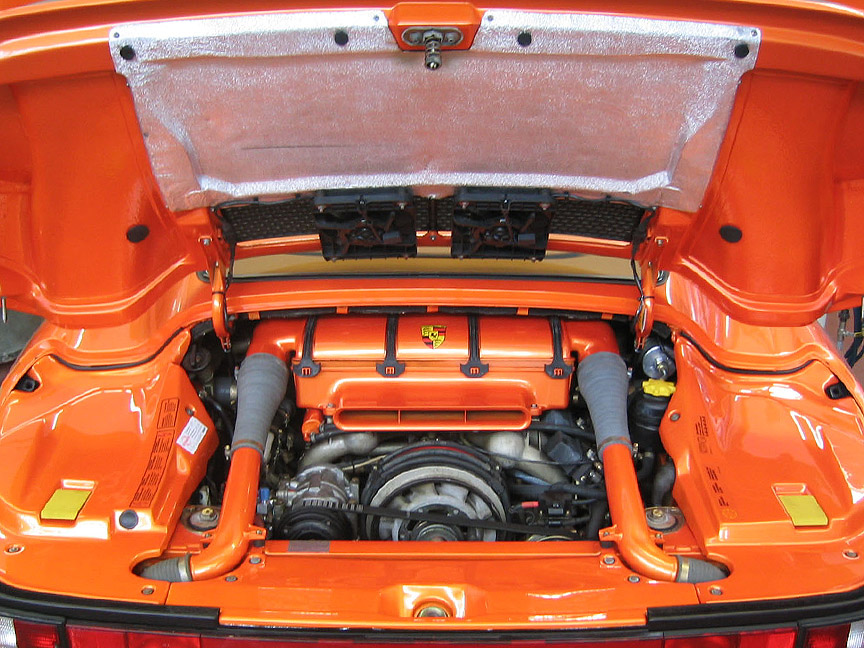


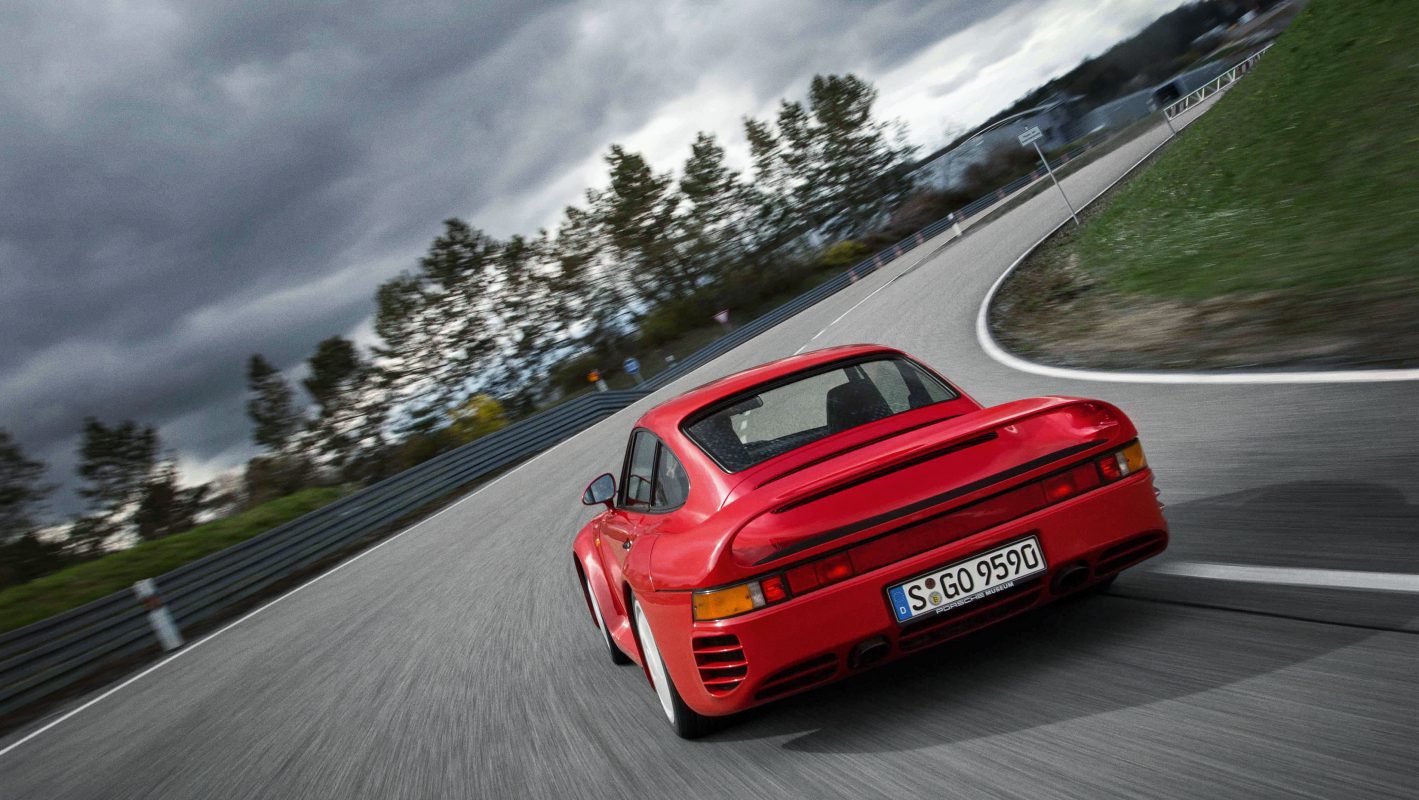
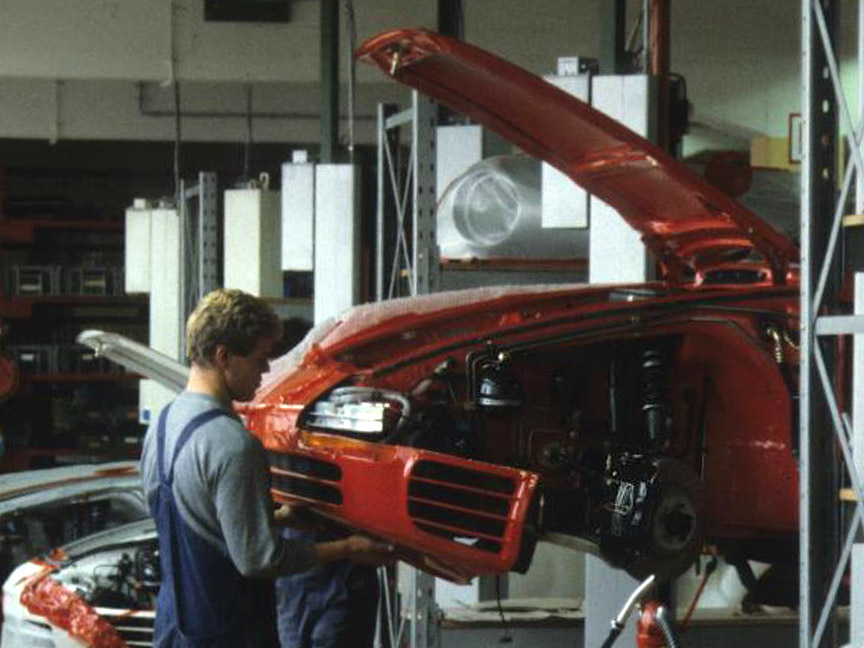
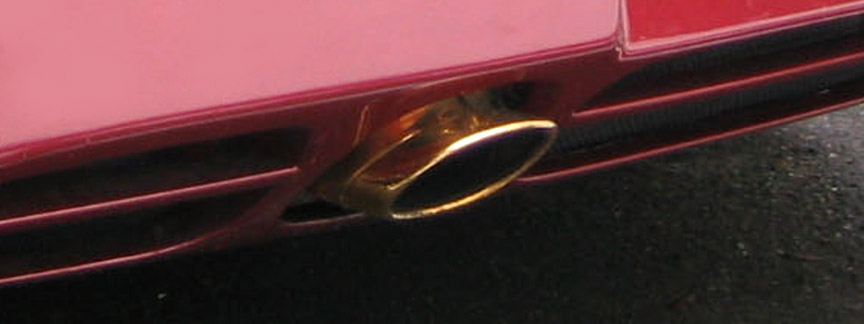
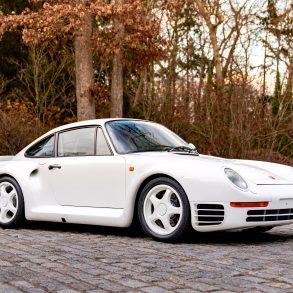
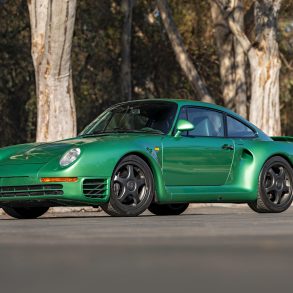
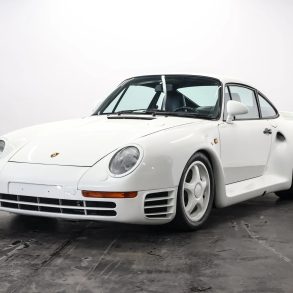
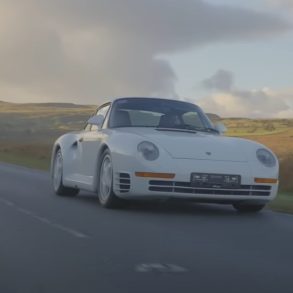
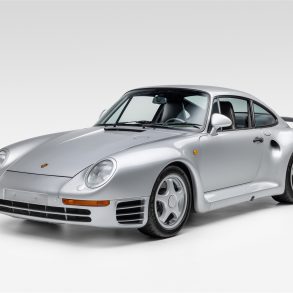
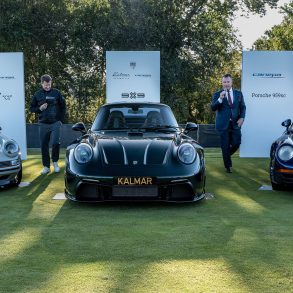
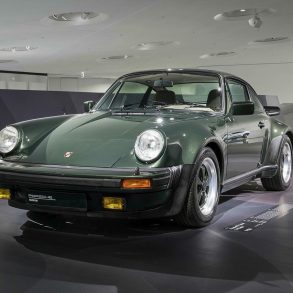
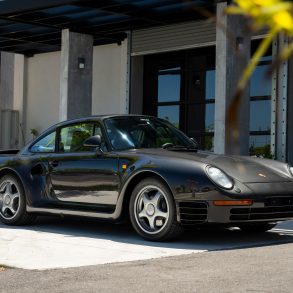

Very interesting background information and stories that intrigues you to read more and learn about the history of Porsche
This is great 👌😉
0